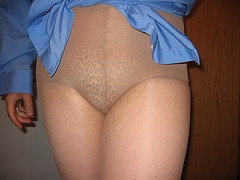
Electro Valve – Italy Sock Knitting Machine – Tantex Corporation
To all solenoid valve users:
Description of all of our products:
Series of solenoid valves are:
1. Direct operated solenoid valve differs from other types for its minimum overall dimensions, its specific design allows single or gang mounting in narrow spaces.
2. Its high switching speed and flow rate make this small valve suitable for different applications also with other fluids than compressed air compatible with constructive material.
3. All version, equipped with manual override, are 3/2 ways N.C and No., 2/2 ways N.C. 12 or 24 Voltages D.C. with cables or connector also with led.
Construction Characteristics:
Electrical part:
Miniature solenoid consisting of a coil made of copper wire of different sizes depending on the voltage, insulated according to F class standards and injection-modeled nylon-glass application. All parts forming the cladding, the electrical connections and the pole pieces are protected against corrosion, electrical connection is by connector or directly with flying leads,
Mechanical part:
AISI 430 cores, AISI 304 return springs, NBR seals, nylon body. The miniature solenoid valves are mounted on a separate base, multiple base or distributors.
Operation
Series 10/15 valves: when the solenoid is energized, the core is drawn into the solenoid base subassembly, Important: when the solenoid is de-energized, the initial returning force for the core, whether developed by spring, pressure or weight, must exert a minimum force to overcome remaining magnetic force created by the solenoid.
When the solenoid is energized, the disc holder assembly seats against the orifice, when the solenoid is de-energized, the disc holder assembly returns. Important: initial returning force for the disc or disc holder assembly, whether developed by spring, pressure, or weight, must exert a minimum force to overcome remaining magnetic force created by the solenoid.
Installation
Check nameplate for correct catalog number, service and wattage, check front of solenoid for the voltage and frequency.
Warning: electrical hazard from the accessibility of live parts, to prevent the possibility of death, serious injury or property damage, install the open-frame solenoid in and enclosure.
Caution: To protect the solenoid valve or operator, install a strainer or filter, suitable for the service involved in the inlet side as close to the valve or operator as possible, clean it periodically depending on service conditions.
Temperature Limitations:
Maximum valve ambient/Fluid temperatures is 50 degrees, minimum ambient/fluid temperature is -5 degrees.
Positioning:
This solenoid is designed to perform properly when mounted in any position, however, for optimum life and performance, the solenoid should be mounted vertically and upright to reduce the possibility of foreign matter accumulating in the solenoid base sub-assembly area.
Wiring:
Wiring must comply with local code and the national electrical code.
Caution: cryogenic applications – solenoid lead wire insulation should not be subjected to cryogenic temperatures, adequate lead wire protection and routing must be provided.
Installation of Solenoid Valve:
Solenoid valves may be assembled as a complete unit, tightening is accomplished by means of a threw-driver at the base of the solenoid valves.
Solenoid Temperature:
Standard solenoids are designed for continuous duty service, when the solenoid is energized for a long period, the solenoid becomes hot and can be touched by hand for an instant, this is a safe operating temperature.
Solenoid Maintenance
1. Preventive maintenance
2. Keep the medium flowing though the solenoid operator or valve as free from dirt and foreign material as possible.
3. While in service, the solenoid operator or valve should be operated at least once a month, to ensure proper opening and closing.
4. Depending on the medium and service conditions, periodic inspection is necessary and replace the worm damage valves.
Causes of Impression Operation
1. Faulty Control Circuit: check the electrical system by energizing the solenoid, a metallic click signifies that the solenoid is operating, absence of the click indicates loss of power supply, check for loose or blown fuses, open-circuited or grounded solenoid, broken lead wires or splice connections.
2. Burned-out solenoid: check for the open-circuited solenoid valve, replace when necessary, check supplying voltage, for it must be the same as specified, check ambient temperature and check that the core is not jammed.
Low Voltage:
Check voltage across the solenoid leads, voltage must be at least 85% of rated voltage.
Taken from: website of Tantex Corporation
Doncloud
July 19, 2009
About the Author
Tantex Corporation
Control Top Pantyhose.wmv